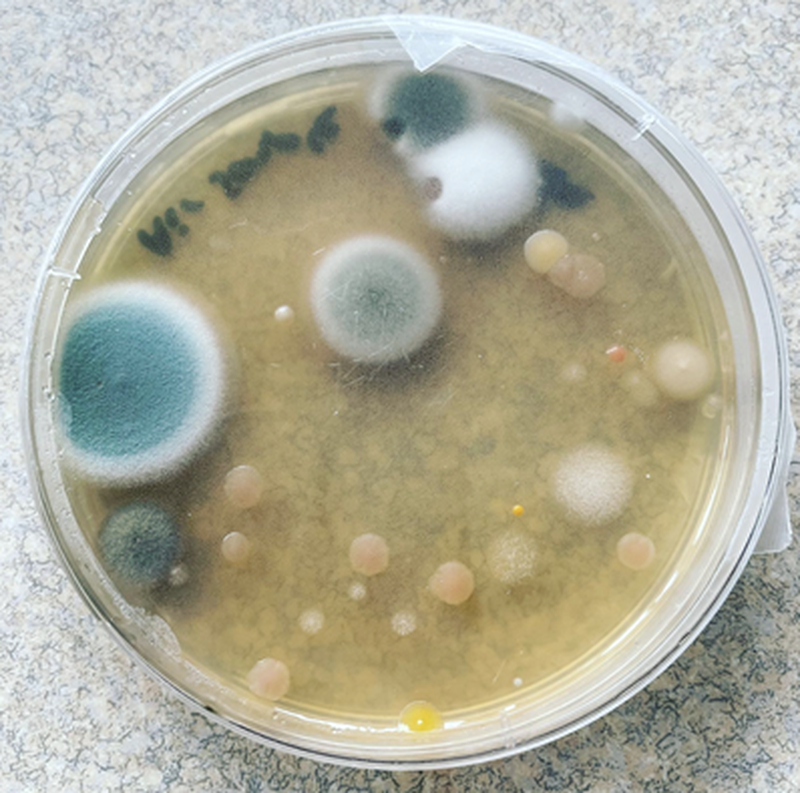Year 9 Study of Microbes Growing on Surfaces
As part of our Medical Science topic this year, we have been studying the brain, the nervous and endocrine systems, infectious diseases and the pathogens that cause them, non-infectious diseases, epidemics and pandemics, vaccines, the discovery of Penicillin, how the body fights infections and how everyday medicine works. The Medical Science topic has been really interesting because we’ve been able to learn about how simple mould helped modern medicine take such a big leap to where it is now through the creation of antibiotics.

Agar plate left open to the air
To further our knowledge on this topic, we have been investigating how microbes live, grow and thrive on different surfaces in the environment around us. We observed this by growing colonies of bacteria and fungi from swabs of different surfaces and objects around the school on agar plates. We studied the amount of growth and the different species between the samples after the plates were left to grow for a few days.
Most samples grew colonies of both bacteria and fungi. The colonies of bacteria that we grew were generally circular or irregularly shaped, small to large in size, smooth, non-pigmented, and opaque. However, the colonies of fungi we grew were generally filamentous in shape, small to large in size, rough, dull, non-pigmented and translucent or opaque. One sample from a student’s shoe grew a huge variety of different microbes, ranging from irregular to circular in shape, from large to punctiform (tiny) in size and varying from opaque to translucent in their optical properties.
A lot of groups in our class swabbed and grew microbes which were on the everyday items we use or touch often (eg phones, bin handles, hand railings, doors and soap and hand sanitiser dispensers), and it was surprising to see the different places the bacteria and fungi were growing, and in what amounts. Something that I found really interesting was that places like railings, desks and door handles, where the cleaners have had to clean more often because of the pandemic, weren’t having as much growth as previous years. This means that the work the maintenance team at our school have been doing to reduce the risk of COVID-19 has also helped protect us from the bacteria and fungi there too! 😂
Our teacher, Miss Stapley, left one agar plate open in the classroom (photo included), allowing it to pick up any bacteria and fungi that was floating in the air. Luckily for our study (whilst a bit gross), it grew a variety of different species of bacteria and mould. Our laboratory technician, Mrs Knox, is experienced in microbiology and identified that we had grown Penicillium mould, which was very interesting to see after our work on Alexander Fleming. Penicillium mould is used to make Penicillin - one of the most widely used and effective antibiotics developed in the 1940s. After seeing how much bacteria and fungi that was on this agar plate after just being left open to the air, even compared to places like light switches and bin handles, one student said what everyone else was thinking: “I’m never breathing air again!”.
This experiment was very interesting to do as, due to COVID, we are becoming increasingly more aware of the germs around us. It was also very fun and exciting as we explored the school trying to think of the weirdest things we could swab to see what really was on them. But, thanks to our maintenance team, we were able to see how clean our school really is. The Medical Science topic, and all the topics Year 9 Science has offered, have been really fun and interesting and I look forward to studying this topic in more detail in senior Biology in future years.
Angelina B - Year 9 Student